A sump pump check valve, although small in size, plays a crucial role in preventing backflow and maintaining the efficiency of your sump pump system. In this blog post, we will dive into the details of what a sump pump check valve is and how it works to protect your home from potential flooding. This information will not only help you understand the inner workings of your sump pump but also guide you in making sure it continues to function effectively for years to come.
What is a Sump Pump?

A sump pump is a device that helps prevent flooding in your basement. It works by collecting water in a sump pit and then ejecting it out and away from your home’s foundation. You could say that the primary purpose of a sump pump is to keep lower-lying areas (such as basements) from flooding and becoming a dank, damp disaster zone. Nobody wants that, right?
There are two main types of sump pumps: pedestal and submersible. Pedestal pumps have the motor mounted above the pit, while submersible pumps are installed inside the pit itself.
Sump pumps are also available in different sizes, ranging from small units that can handle minor flooding to larger ones that can handle more severe floods.
Other features of sump pumps include battery backups (in case of power outages), built-in check valves (to prevent water from flowing back into the sump pit), and even Wi-Fi connectivity (so you can monitor your pump remotely).
If you live in an area prone to flooding, investing in a sump pump could save you a lot of headaches (and water damage) down the road.
How Do Sump Pumps Work?
A sump pit is dug into the ground in the lowest part of the basement or crawl space. This pit collects any water that seeps in through the walls or floor.
Next, the sump pump itself is installed inside the pit. When the water level in the pit rises above a certain point, a float switch triggers the pump to turn on. The pump then sucks up the water through a pipe and routes it away from the house.
As noted above, sump pumps can be a real lifesaver during heavy rainstorms or if you live in a flood-prone area. However, they do require some maintenance to keep them running smoothly. You’ll want to ensure the pit is free of debris and the pump is free of obstructions. You may also need to replace the pump’s battery or motor from time to time.
Learn more about – Why Do You Need a Sump Pump in Your Basement?
What is a Sump Pump Check Valve?
A sump pump check valve is a one-way valve that allows water to flow in only one direction, which is away from your home’s foundation. Without a check valve, your sump pump would have to work extra hard to push water up and out of your home, which could lead to premature wear and tear.
Here’s how it works…
When water accumulates in your sump pit, the pump kicks on and begins to pump the water out through a discharge pipe. The check valve is installed on this pipe and ensures that water cannot flow back into the pit once it’s been pumped out. This means that the pump doesn’t have to work as hard to maintain the water level in the pit, which can extend its lifespan and save you money on maintenance costs.
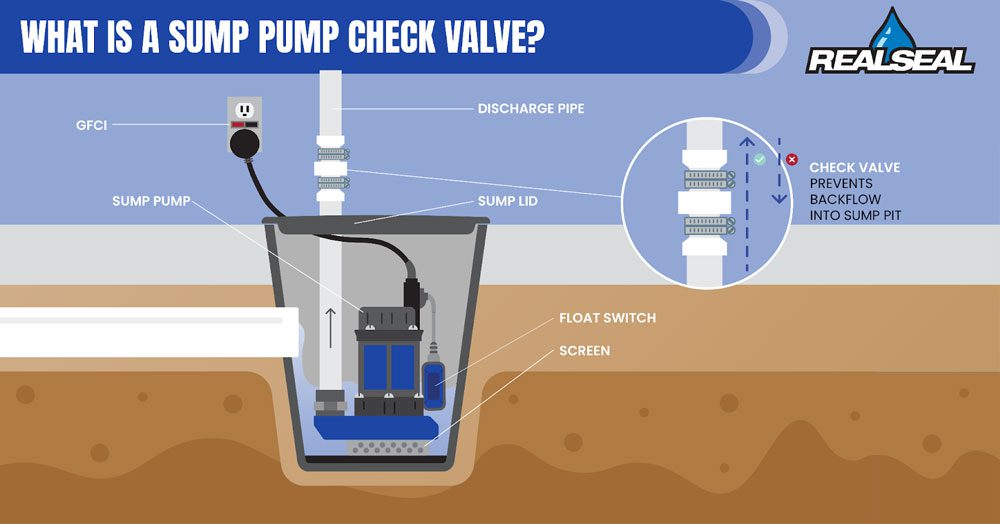
One thing to remember when choosing a sump pump check valve is to ensure it’s compatible with your pump’s flow rate and discharge pipe diameter. Installing the wrong size or type of valve can cause problems and reduce the overall effectiveness of your sump system.
Why it’s a Good Idea to Have a Sump Pump Check Valve
As mentioned above, by installing a check valve, you create a one-way street for water – it can only flow out of your sump pump, not back in. This ensures that all the water your pump is removing from your basement or crawl space is being sent far away from your home, where it can’t cause any damage.
Another benefit of a sump pump check valve is that it can help prolong the life of your sump pump. Without a check valve, your pump has to work much harder to remove the same amount of water – it’s like trying to push a boulder up a hill instead of down. This can cause premature wear and tear on your pump, leading to costly repairs or replacements.
What Might Happen if There Isn’t a Sump Pump Check Valve?
A few things could happen if you don’t have a check valve. For starters, you could experience what’s called “short cycling.” This is when the sump pump turns on and off more frequently than it should. Not only is this annoying, but it can also cause your pump to wear out faster, so you’ll have to replace it sooner.
Another issue that could arise is an overwhelmed sump pump. Without a check valve, water can flow back into the sump pit after it’s been pumped out. This means that your sump pump will have to work harder and longer, potentially leading to burnout or failure.
Common Problems With Sump Pumps
When it comes to sump pumps, there are a few common issues that can arise:
- Clogged discharge pipe – This can happen if dirt or debris gets into the pipe and causes a blockage, preventing the water from being pumped out properly.
- Faulty switch – This can cause the pump not to turn on or turn off.
- Failing motor – This can cause the pump not to work at all.
- Improper size – Sometimes, the sump pump may not be properly sized for the area from which it needs to pump water, leading to overuse and premature wear and tear.
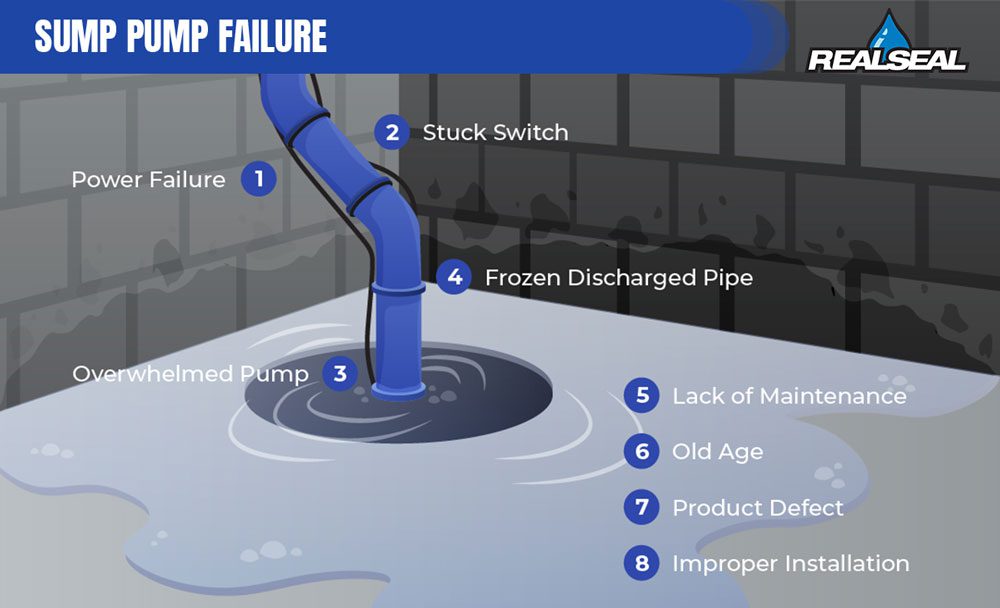
Sump Pumps Require Good Maintenance Practices
If you’ve got a sump pump at home, it’s super important that you keep it in tip-top shape. After all, you don’t want it failing on you when you need it most. So, here are a few good maintenance practices you can follow to ensure your sump pump stays in good shape:
- Make sure you test your sump pump regularly. This means pouring water into the pit to see if the pump kicks in and starts pumping the water out. You should do this at least once a month if your pump does not run regularly, preferably also before the rainy season starts.
- Keep an eye on the power supply. Ensure the pump is plugged in, and check the circuit breaker to ensure it hasn’t tripped. You don’t want your sump pump failing because it’s not getting power.
- Check the discharge pipe and make sure it’s not blocked or frozen. You can pour a bucket of water into the pit to see if the water is being discharged properly.
- Clean your sump pump pit once a year. Remove any debris or sediment that may have accumulated at the bottom of the pit. This will ensure that the pump is not working harder than it needs to and will prolong its lifespan.
- If you notice any unusual sounds or vibrations, call a pro. A trained technician can diagnose and fix any issues before they become major problems.
Also, check out our post about – Sump Pump Maintenance
Why Your Sump Pump Should Have a Battery Backup
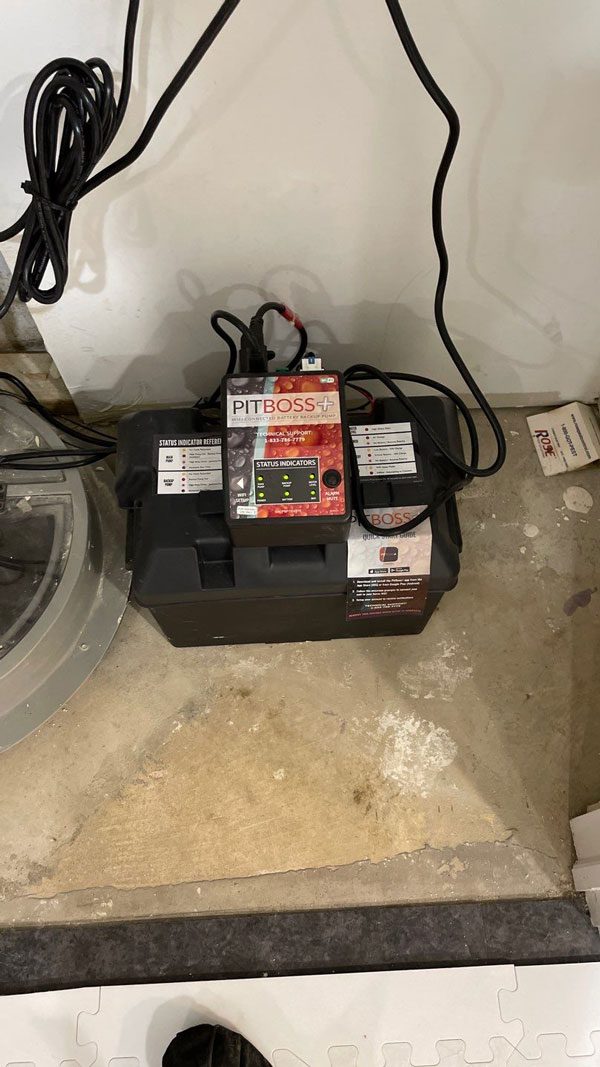
If your area is prone to power outages (and let’s face it, most of us have experienced at least one), then a sump pump without a battery backup is essentially useless during those outages.
Think about it: during heavy rain or snow melt that causes flooding, the power could go out, rendering your sump pump powerless. Without a battery backup, the basement or crawlspace could quickly become flooded, causing costly damage to your home and possessions.
A battery backup for your sump pump ensures that it will continue operating even when the power goes out. The battery will keep the pump running for hours.
Plus, a battery backup is also great to have in case of a mechanical failure with the sump pump itself. That way, even if the pump fails, the backup battery will keep things from flooding until you can fix it.
If you’re concerned about the sump pump in your Chicagoland home, contact The Real Seal today to schedule an evaluation.
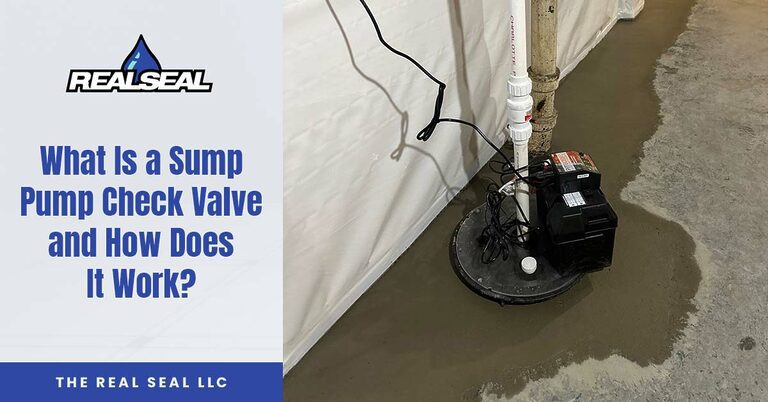
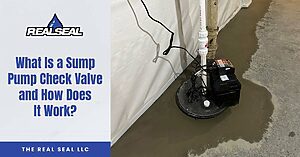





2 Responses
Battery back up pumps seem to have a lower horse power rating than primary pump..is there a reason for that?
The stronger the pump, the quicker the battery it runs on will drain. So it’s a “give and take” with how much power the pump can have while lasting as long as possible to make it through the power outage.